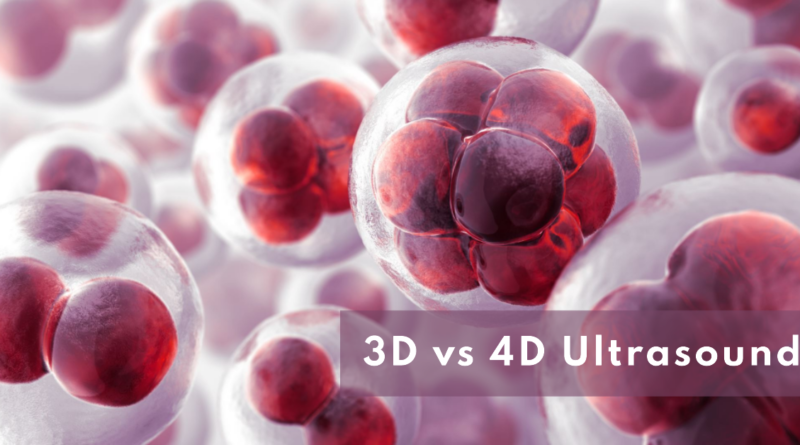3D vs 4D Ultrasound: Key Differences Explained
As technology advances, so does the opportunity for expecting parents to connect with their unborn child. Ultrasound scans have long been a standard part of prenatal care, primarily using 2D imaging. However, recent years have seen a rise in the popularity and accessibility of 3D and 4D ultrasounds, offering a whole new dimension in prenatal imaging. These advanced scanning technologies can significantly enhance the experience of pregnancy while providing valuable information to healthcare providers. This article delves into the key differences between 3D and 4D ultrasounds to help expecting parents understand which option might be the best for them.
What Are 3D and 4D Ultrasounds?
Before comparing the two, it’s important to understand what these technologies entail. A 3D ultrasound creates a three-dimensional image of the fetus. This means parents can see the width, height, and depth of the fetus, offering a static three-dimensional image of their baby.
In contrast, 4D ultrasounds build on the technology of 3D imaging by adding the dimension of time, which results in a moving video effect. Thus, a 4D ultrasound shows a fetus in motion, which can capture activities such as yawning, smiling, or other movements in real-time.
Key Differences Between 3D and 4D Ultrasounds
- Image Type: The most obvious difference is that 3D ultrasounds provide a still image, whereas 4D scans offer a video effect. This can affect the kind of experience expecting parents have during their ultrasound session.
- Purpose and Use: 3D ultrasounds are often used to diagnose suspected congenital abnormalities more effectively than 2D scans. They can provide clearer images of the baby’s internal organs for medical assessment. 4D scans, however, are generally used for a more emotional experience, allowing parents to see their baby’s movements and expressions.
- Timing in Pregnancy: The timing of when these scans are performed can also differ. Optimal times for 3D scans are between 26 and 30 weeks of pregnancy when the baby is sufficiently developed yet still has enough space to be viewed clearly. For 4D scans, a similar timeframe is recommended, although some parents opt for multiple scans to view different stages of fetal movement.
- Duration and Cost: 4D ultrasounds tend to be more expensive than 3D due to the advanced technology and the more detailed images they provide. Also, 4D scans might take longer as technicians capture enough movement and different angles.
- Availability: Not all clinics offer 3D and 4D ultrasounds due to the specialized equipment required. Availability can depend on geographical location and the facility’s focus on prenatal care.
Benefits of Advanced Ultrasound Scans
Advanced ultrasound scans can provide a range of benefits:
- Enhanced Bonding: Seeing a baby in three-dimensional view or observing its movements in real-time can significantly enhance parental bonding.
- Early Detection: These scans can help in detecting and addressing potential health issues early on.
- Peace of Mind: For many parents, seeing their baby on the screen and knowing that its development is on track can provide significant peace of mind.
Ecotown Diagnostics: Enhancing Your Prenatal Experience
At Ecotown Diagnostics, located near Bangalore, we specialize in providing top-quality prenatal ultrasound scans, including 3D and 4D options. Our state-of-the-art technology ensures that you receive the most accurate images possible, enhancing your prenatal care experience. Moreover, we integrate ultrasound services into corporate wellness programs, offering convenient access to expectant parents while helping companies ensure the health and well-being of their employees’ families.
Frequently Asked Questions
Q1: Are 3D and 4D ultrasounds safe? A1: Both 3D and 4D ultrasounds are considered safe when performed by qualified professionals. They use the same type of sound waves as 2D ultrasounds, just in a different manner.
Q2: How often should I get 3D or 4D scans? A2: Generally, one or two scans during your pregnancy are sufficient unless additional scans are medically indicated.
Q3: Can 3D and 4D ultrasounds replace standard 2D scans? A3: No, 3D and 4D ultrasounds are typically complementary to standard 2D ultras since they serve different diagnostic and emotional purposes.
Q4: What is the best week of pregnancy to have a 3D or 4D scan? A4: The ideal time for 3D or 4D scans is between 26 and 30 weeks of pregnancy.
Q5: How can I prepare for a 3D or 4D ultrasound? A5: Drink plenty of fluids in the days leading up to your scan to improve the quality of the images, and follow any other instructions your healthcare provider may recommend.
Conclusion
Choosing between a 3D and 4D ultrasound will depend largely on what you wish to gain from the experience—whether it’s more detailed medical information or the chance to see your baby’s smile and yawn. Technology has brought us closer than ever to our future children, providing not just images but moments of real-time connection. As you prepare to make this choice, consider what matters most to you during this special time. How will you remember these first glimpses of your child?

